Study on the Evolution Characteristics of Dam Failure Due to Flood Overtopping of Tailings Ponds
Abstract
:1. Introduction
2. Similar Model Test System
2.1. Project Overview
2.2. Model Test System of Overtopping
2.3. Tailings Dam Model
2.4. Water Injection Unit
2.5. Monitoring and Observation Unit
2.6. Test Procedure
3. Analysis of Test Results
3.1. Variation Characteristics of Seepage Line
3.2. Variation Characteristics of Pore Water Pressure and Soil Pressure
3.3. Process of Dam Break
3.4. Outflow of Tailings after Dam Break
4. Discussion
4.1. Analysis of Dam Break Process
4.2. Mechanisms of Dam Break Due to Flood Overtopping
5. Conclusions
Author Contributions
Funding
Data Availability Statement
Conflicts of Interest
References
- Czajkowski, M.; Meade, N.; da Motta, R.S.; Ortiz, R.A.; Welsh, M.; Blanc, G.C. Estimating environmental and cultural/heritage damages of a tailings dam failure: The case of the Fundão dam in Brazil. J. Environ. Econ. Manag. 2023, 121, 102849. [Google Scholar] [CrossRef]
- Buch, A.C.; Sims, D.B.; de Ramos, L.M.; Marques, E.D.; Ritcher, S.; Abdullah, M.M.; Silva-Filho, E.V. Assessment of environmental pollution and human health risks of mine tailings in soil: After dam failure of the Córrego do Feijão Mine (in Brumadinho, Brazil). Environ. Geochem. Health 2024, 46, 72. [Google Scholar] [CrossRef] [PubMed]
- Turi, D.; Pusztai, J.; Nyari, I. Causes and circumstances of red mud reservoir dam failure in 2010 at Mal Zrt factory site in Ajka, Hungary. In Proceedings of the 7th Conference of the International Conference on Case Histories in Geotechnical Engineering, Chicago, IL, USA, 29 April–4 May 2013. [Google Scholar]
- Berghe, J.F.V.; Ballard, J.C.; Pirson, M.; Reh, U. Risks of tailings dams failure. Proc. Int. Symp. Geotech. Risk Saf. ISGSR 2011, 2, 6. [Google Scholar]
- Kossoff, D.; Dubbin, W.E.; Alfredsson, M.; Edwards, S.J.; Macklin, M.G.; Hudson-Edwards, K.A. Mine tailings dams: Characteristics, failure, environmental impacts, and remediation. Appl. Geochem. 2014, 51, 229–245. [Google Scholar] [CrossRef]
- Lyu, Z.; Chai, J.; Xu, Z.; Qin, Y.; Cao, J. A comprehensive review on reasons for tailings dam failures based on case history. Adv. Civ. Eng. 2019, 2019, 4159306. [Google Scholar] [CrossRef]
- Du, C.; Tao, H.; Yi, F.; Cheng, C. Experimental study on overtopping dam-break of a tailing reservoir under extreme conditions. Environ. Sci. Pollut. Res. 2024, 31, 6874–6890. [Google Scholar] [CrossRef]
- Wahl, T.L. Prediction of Embankment Dam Breach Parameters: A Literature Review and Needs Assessment; Dam Safety Research Report; Water Resources Research Laboratory, U.S. Department of the Interior, Bureau of Reclamation Dam Safety Office: Washington, DC, USA, 1998.
- Froehlich, D.C. Embankment-Dam Breach Parameters. In Proceedings of the Hydraulic Engineering, Proceedings of the 1987 National Conference, Williamsburg, VA, USA, 3–7 August 1987; pp. 570–575. [Google Scholar]
- Zuo, T.; Li, X.; Wang, J.; Hu, Q.; Tao, Z.; Hu, T. Insights into natural tuff as a building material: Effects of natural joints on fracture fractal characteristics and energy evolution of rocks under impact load. Eng. Fail. Anal. 2024, 163, 108584. [Google Scholar] [CrossRef]
- Ralston, D.C. Mechanics of embankment erosion during overflow. In Hydraulic Engineering; ASCE: Reston, VI, USA, 1987; pp. 733–738. [Google Scholar]
- Hanson, G.J.; Temple, D.M.; Cook, K.R. Dam overtopping resistance and breach processes research. In Proceedings of the Association of State Dam Safety Officials Annual Conference, St. Louis, MO, USA, 13 October 1999. [Google Scholar]
- Rico, M.; Benito, G.; Diez-Herrero, A. Floods from tailings dam failures. J. Hazard. Mater. 2008, 154, 79–87. [Google Scholar] [CrossRef]
- Chen, S.; Zhong, Q.; Cao, W. Breach mechanism and numerical simulation for seepage failure of earth-rock dams. Sci. China Technol. Sci. 2012, 55, 1757–1764. [Google Scholar] [CrossRef]
- Shengshui, C.; Qiming, Z.; Qiang, R.E.N. Numerical study on break development due to piping failure for earth-rock dams. Chin. J. Geotech. Eng. 2009, 31, 653–657. [Google Scholar]
- Chen, S.S.; Zhong, Q.M.; Cao, W. Centrifugal model test and numerical simulation of the breaching process of clay core dams due to overtopping. Adv. Water Sci. 2011, 22, 674–679. [Google Scholar] [CrossRef]
- Hanson, G.J.; Robinson, K.M.; Cook, K.R. Prediction of headcut migration using a deterministic approach. Trans. ASAE 2001, 44, 525. [Google Scholar] [CrossRef]
- Hanson, G.J.; Cook, K.R.; Hunt, S.L. Physical modeling of overtopping erosion and breach formation of cohesive embankments. Trans. ASAE 2005, 48, 1783–1794. [Google Scholar] [CrossRef]
- Hunt, S.L.; Hanson, G.J.; Cook, K.R.; Kadavy, K.C. Breach widening observations from earthen embankment tests. Trans. ASAE 2005, 48, 1115–1120. [Google Scholar] [CrossRef]
- Souza, T.F., Jr.; Teixeira, S.H.C. Simulation of tailings release in dam break scenarios using physical models. REM Int. Eng. J. 2019, 72, 385–393. [Google Scholar] [CrossRef]
- Gens, A.; Alonso, E.E. Aznalcollar dam failure. part 2: Stability conditions and failure mechanism. Geotechnique 2006, 55, 185–201. [Google Scholar] [CrossRef]
- Aleixo, R.; Ozeren, Y.; Altinakar, M. Tailings dam-break flow analysis by means of a combined PIV-PTV tool. In River Flow 2014, Lausanne; CRC Press: London, UK, 2014. [Google Scholar] [CrossRef]
- Jing, X.F.; Yin, G.Z.; Wei, Z.A.; Li, X.S.; Wang, M.L. Model experimental study of collapse mechanism and broken mode of tailings dam. Rock Soil Mech. 2011, 32, 1377–1404. [Google Scholar] [CrossRef]
- Martínez-Aranda, S.; Fernández-Pato, J.; García-Navarro, P. Mixing-phase model for shear-induced contractive/dilative effects in unsteady water-sediment mixture flows. Adv. Water Resour. 2024, 188, 104710. [Google Scholar] [CrossRef]
- Yang, Y.; Zhou, X.; Chen, X.; Xie, C. Numerical simulation of tailings flow from dam failure over complex terrain. Materials 2022, 15, 2288. [Google Scholar] [CrossRef] [PubMed]
- Martínez-Aranda, S.; Fernández-Pato, J.; García-Navarro, P. Non-Equilibrium Bedload Transport Model Applied to Erosive Overtopping Dambreach. Water 2023, 15, 3094. [Google Scholar] [CrossRef]
- Zhang, X.; Du, D.; Wu, Y.; Ye, P.; Xu, Y. Theoretical and analytical solution on vacuum preloading consolidation of landfill sludge treated by freeze–thaw and chemical preconditioning. Acta Geotech. 2024, 19, 221–238. [Google Scholar] [CrossRef]
- Shi, Y.; Zhao, C.; Peng, Z.; Yang, H.; He, J. Analysis of the lag effect of embankment dam seepage based on delayed mutual information. Eng. Geol. 2018, 234, 132–137. [Google Scholar] [CrossRef]
- Du, C.; Niu, B.; Yi, F.; Jiang, X.; Liang, L. Impact of inundation range of overtopping dam break of tailings pond under actual terrain conditions. PLoS ONE 2023, 18, e0295056. [Google Scholar] [CrossRef]
- Mei, S.; Zhong, Q.; Chen, S.; Shan, Y. Investigation of the overtopping-induced breach of tailings dams. Comput. Geotech. 2022, 149, 104864. [Google Scholar] [CrossRef]
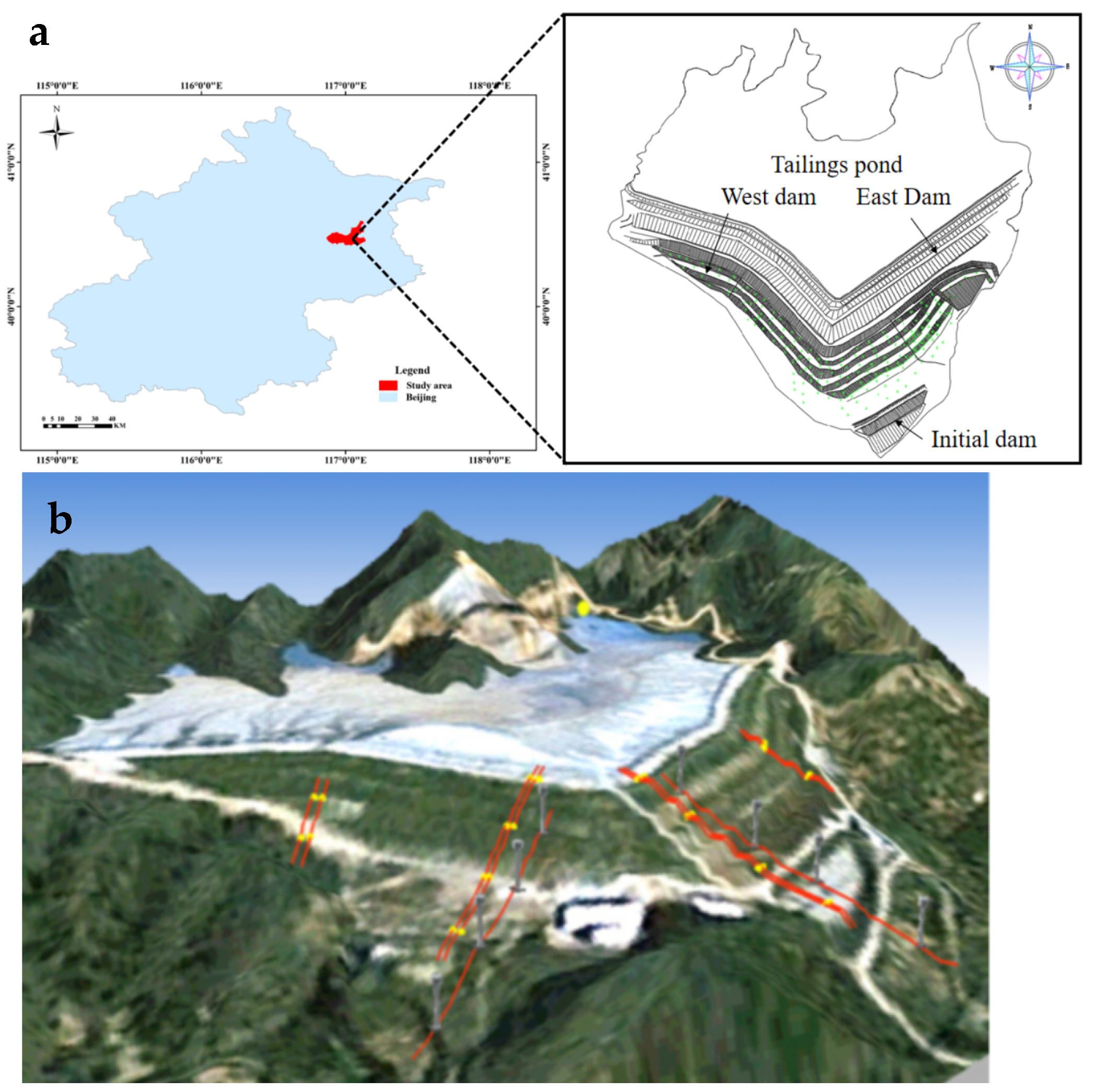
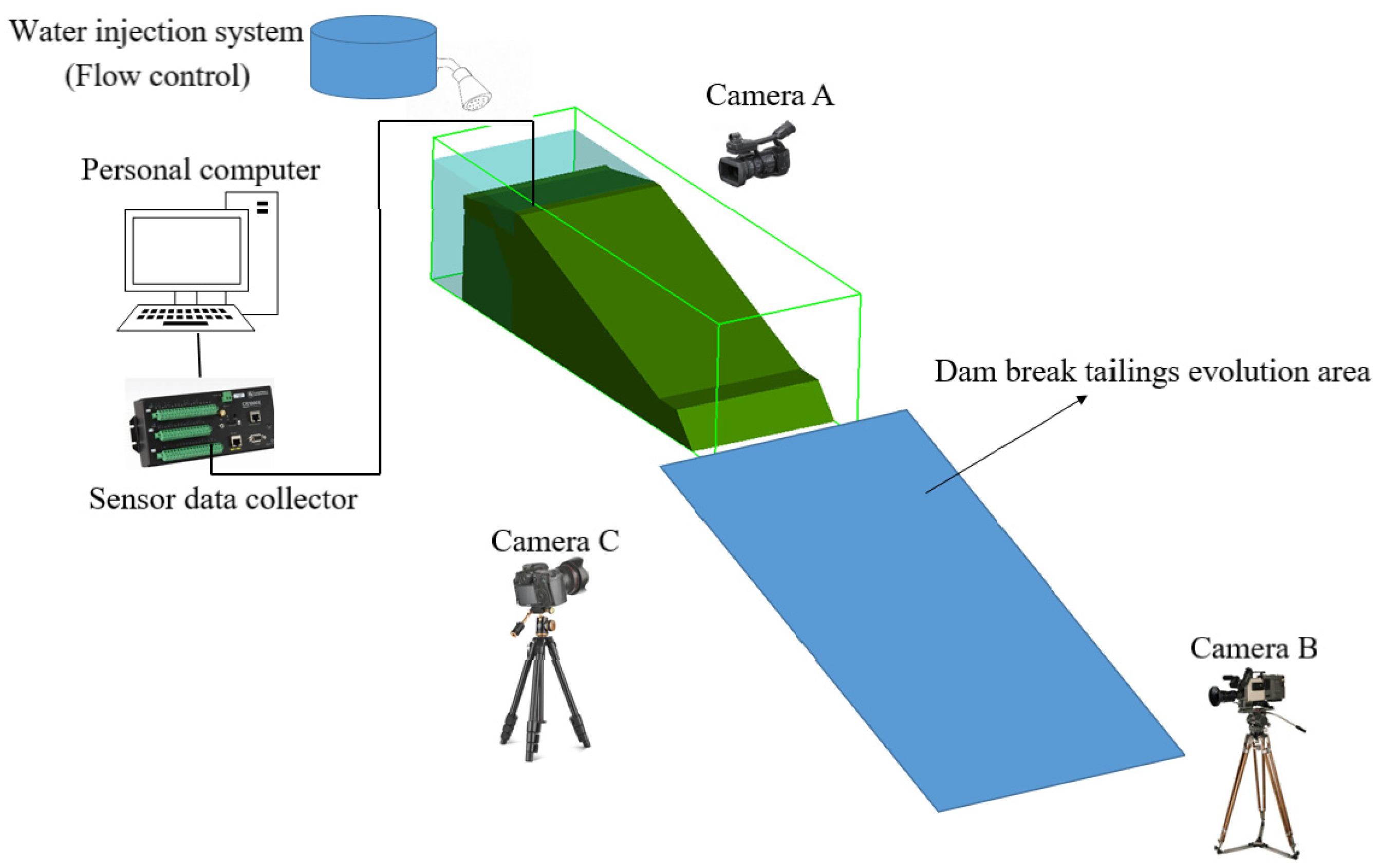
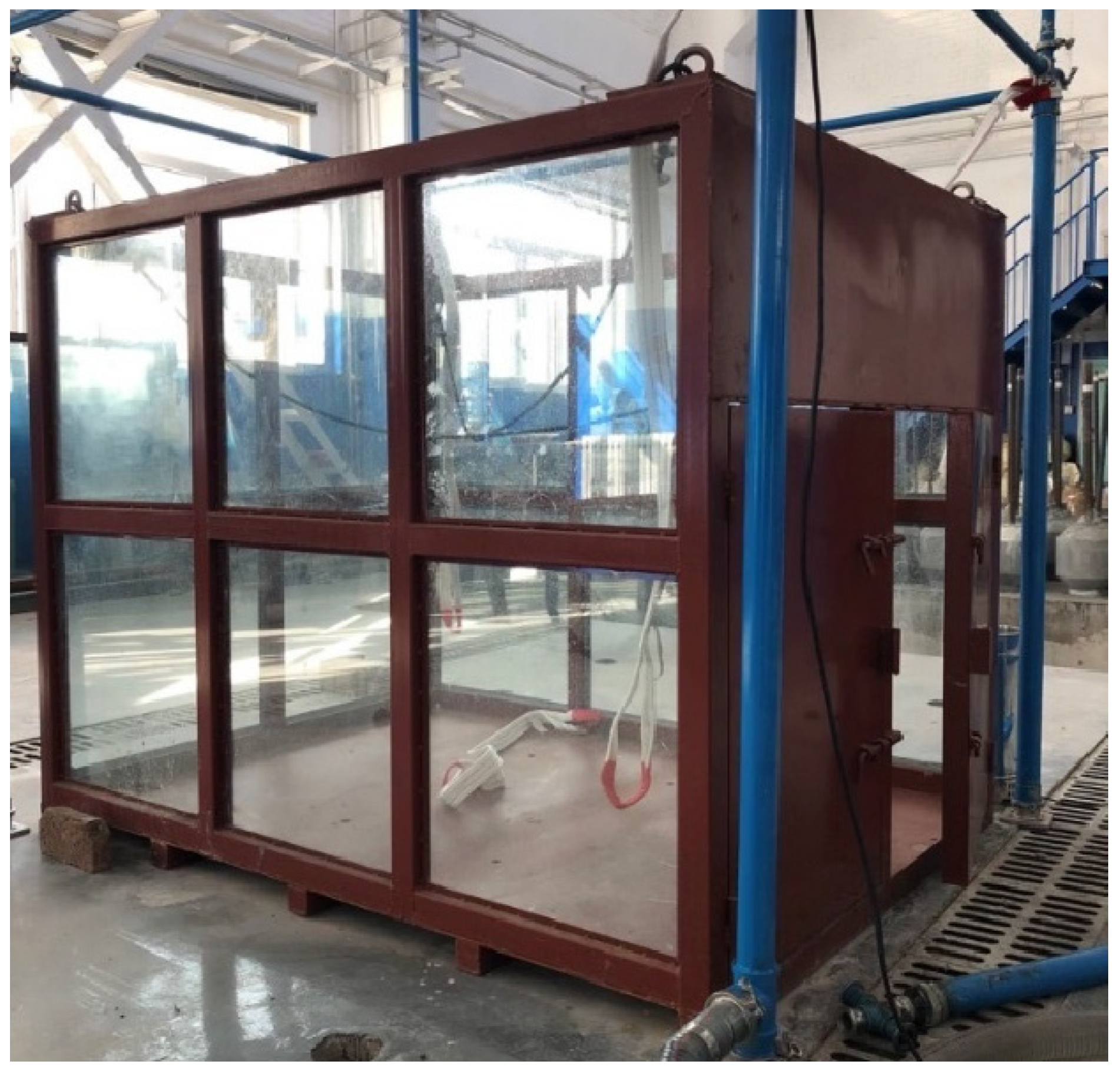
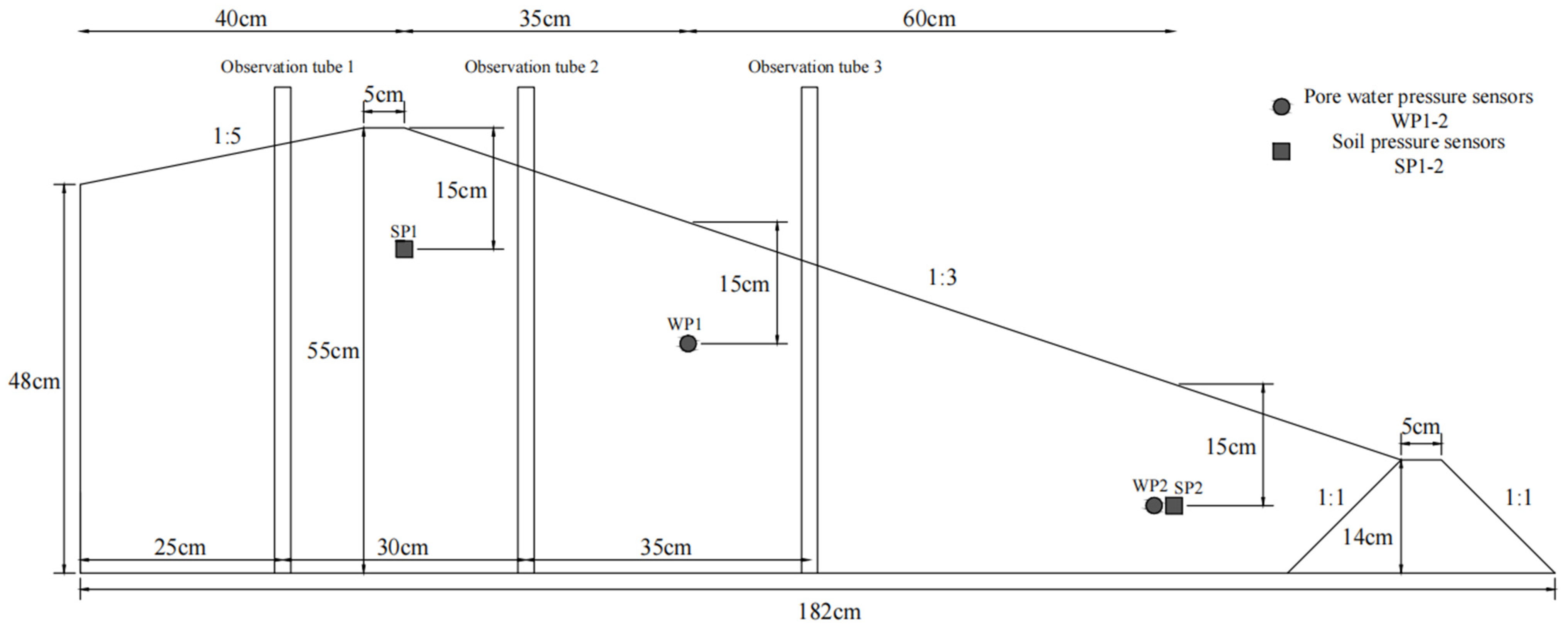
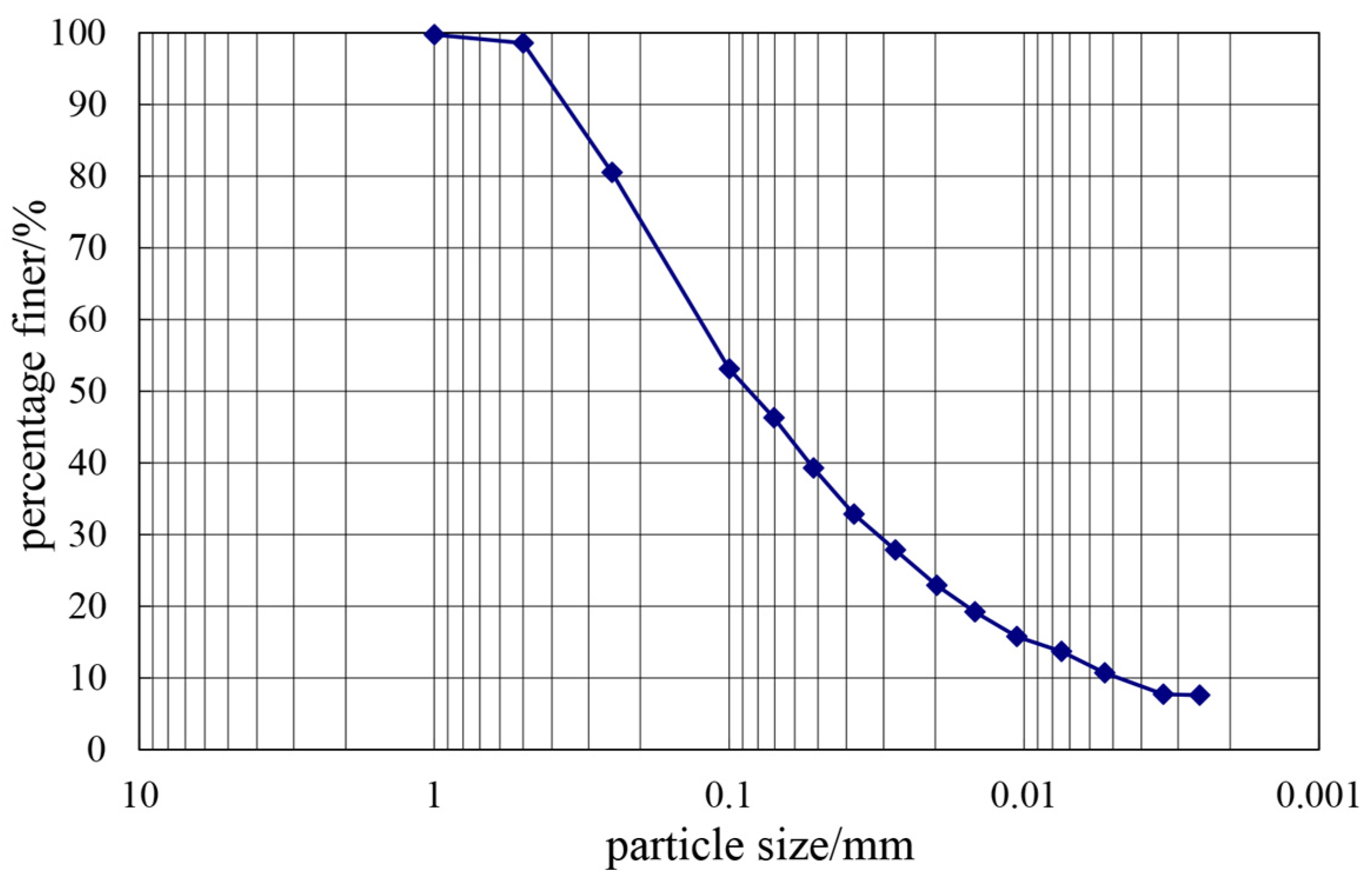
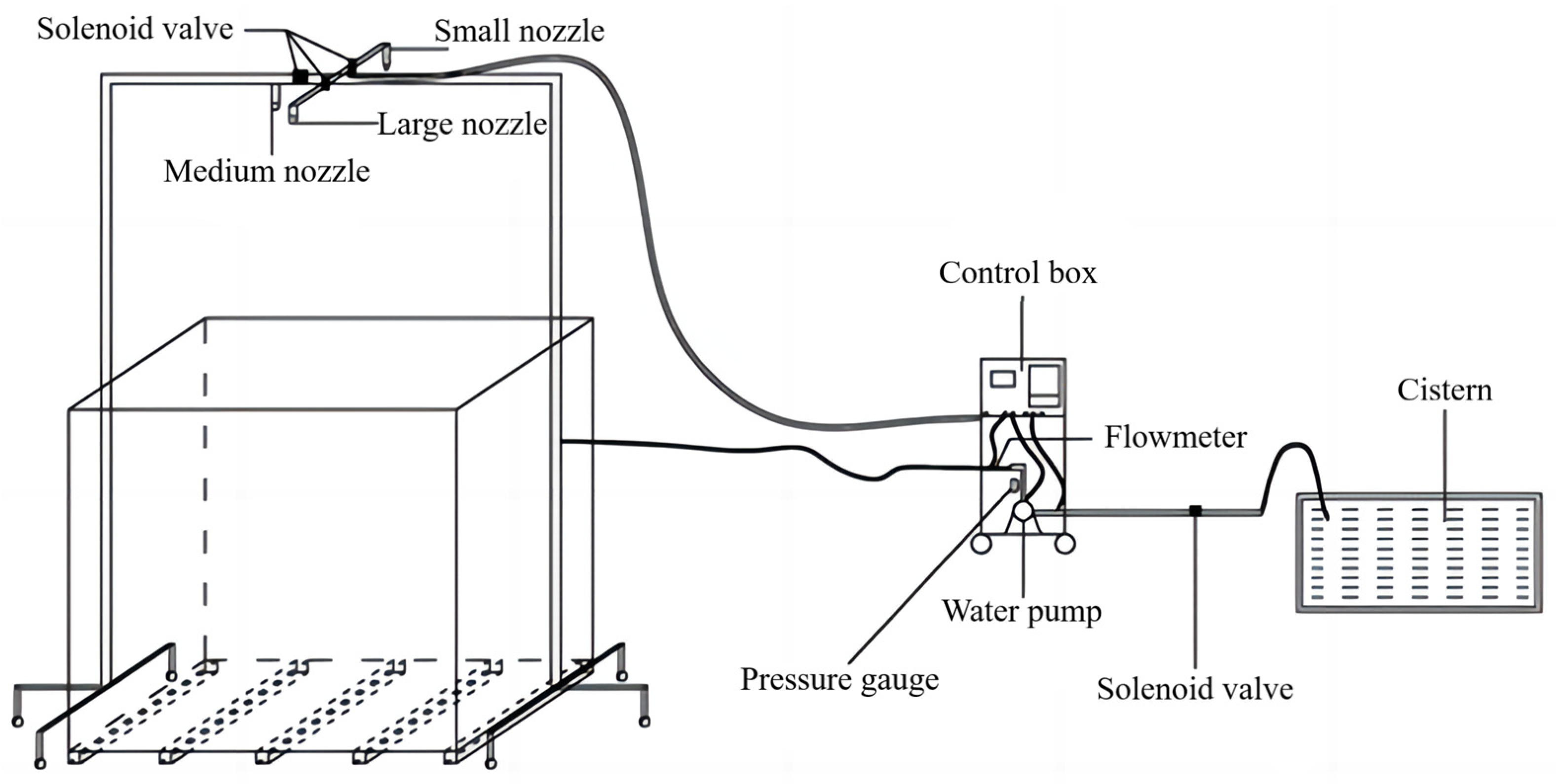
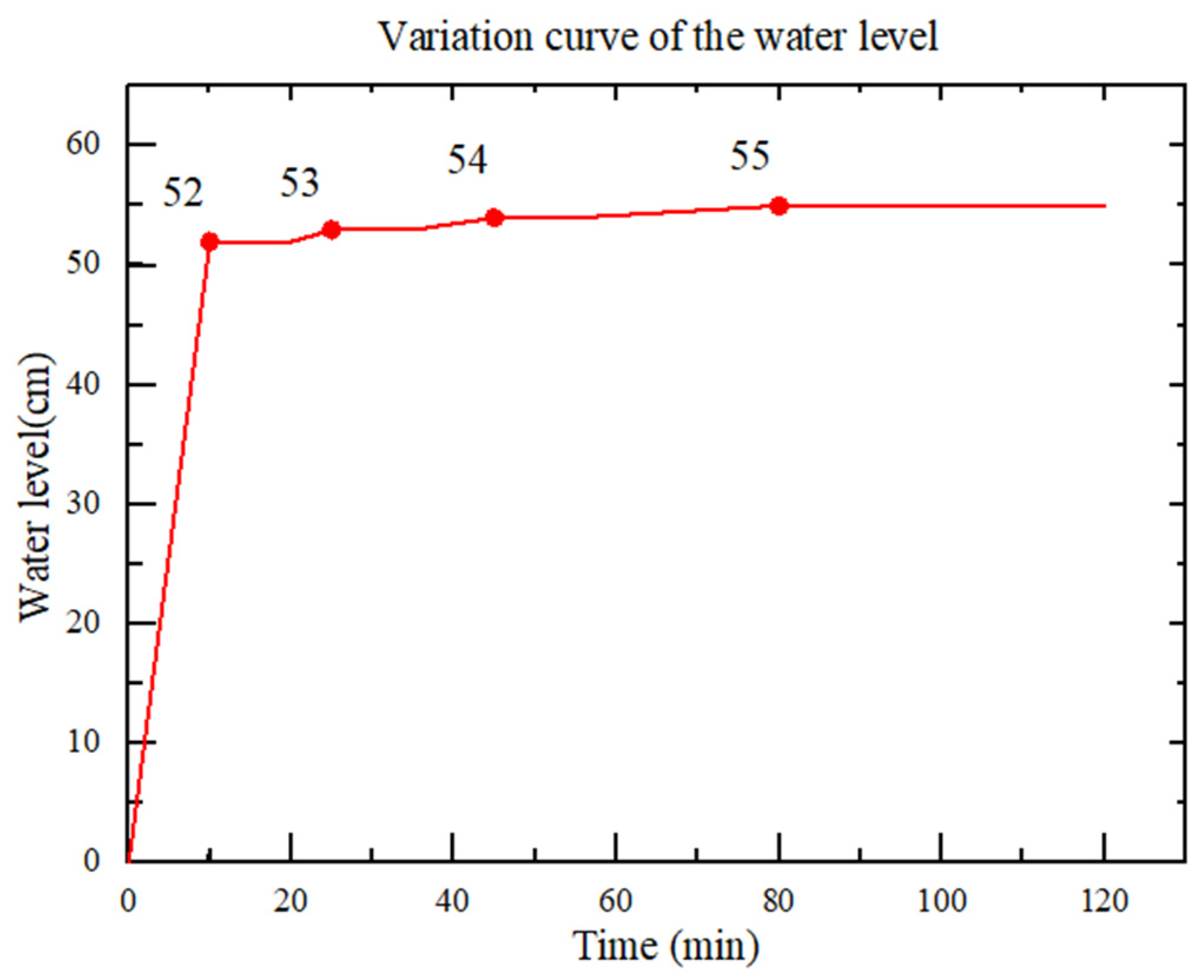
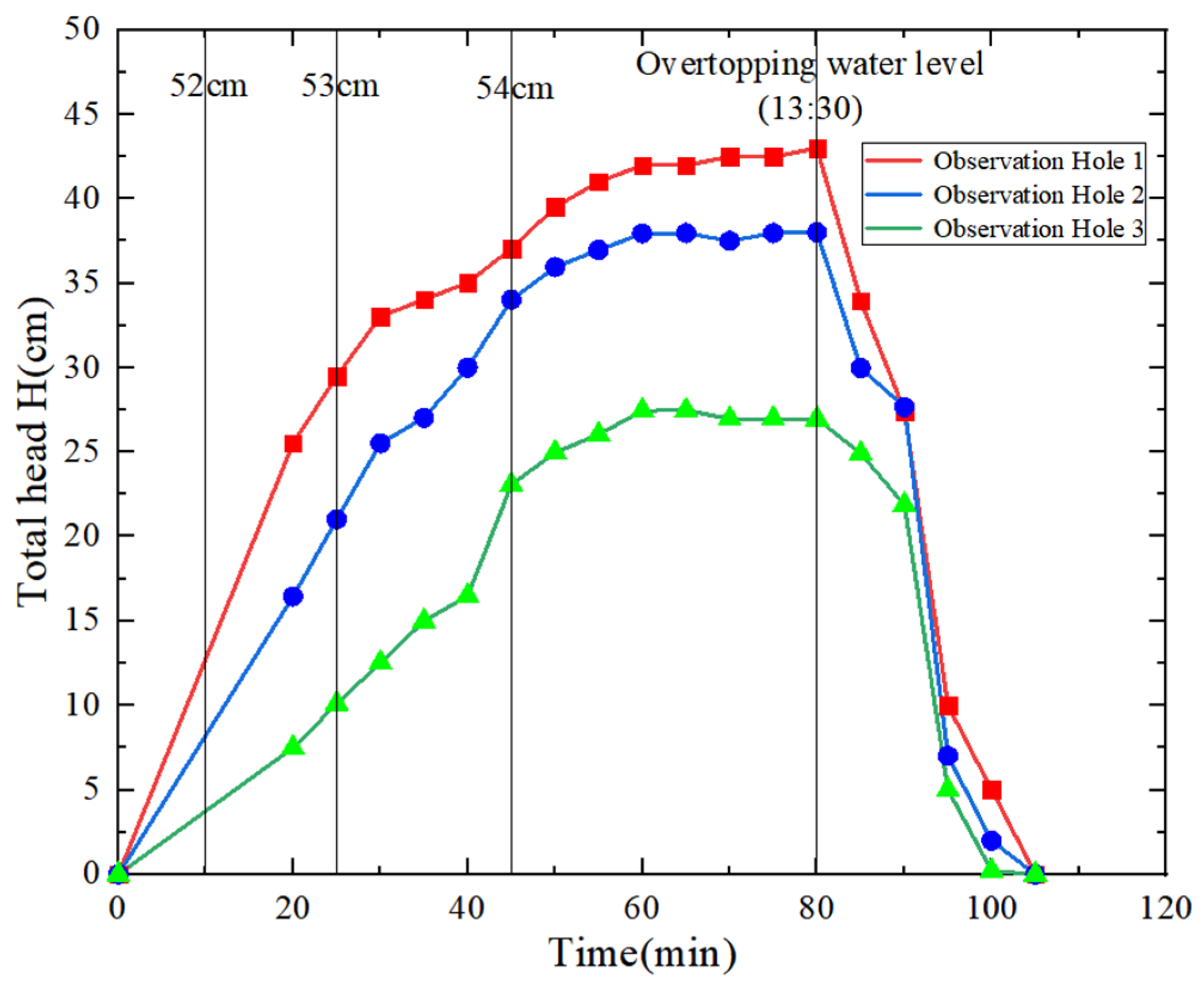

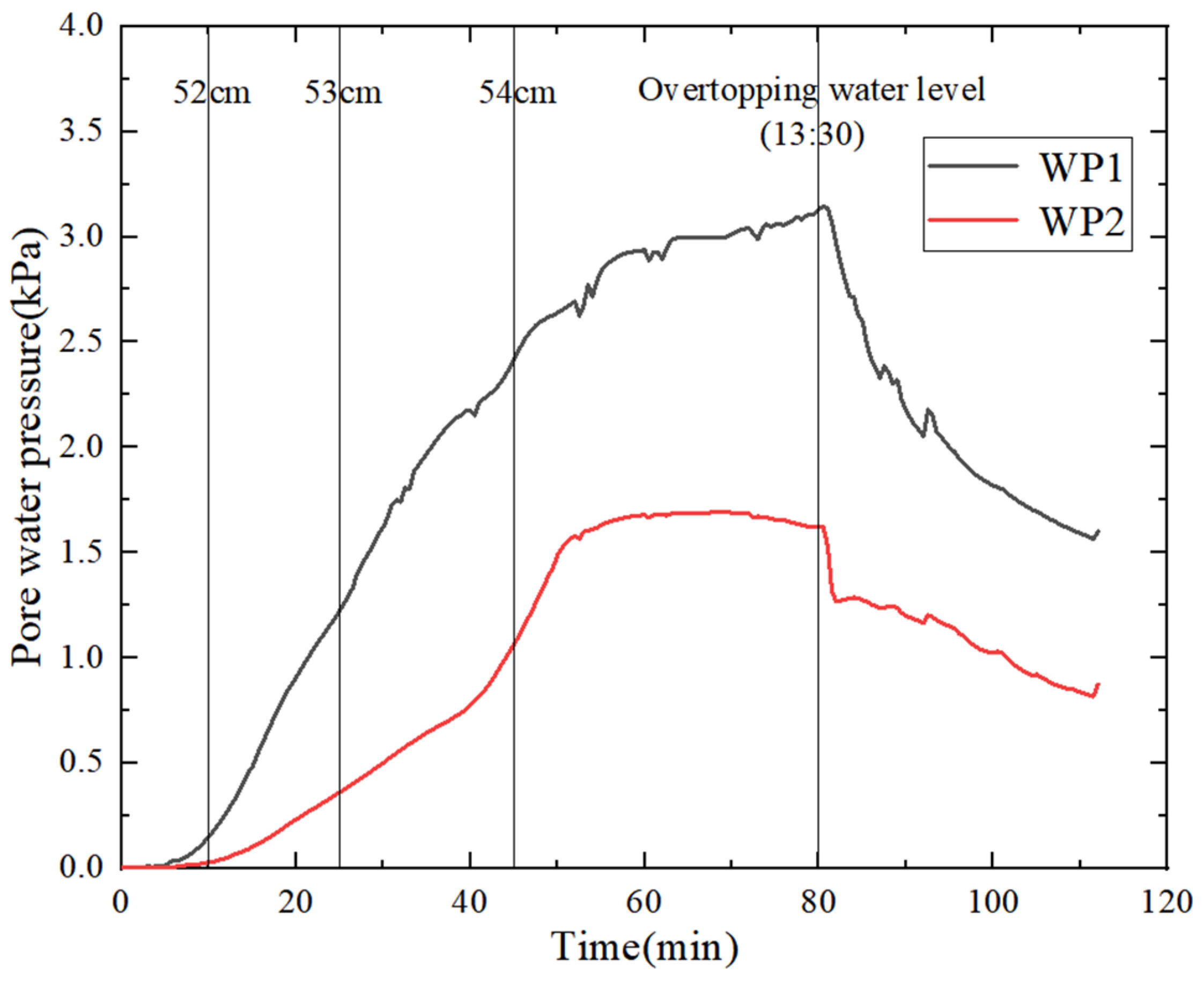
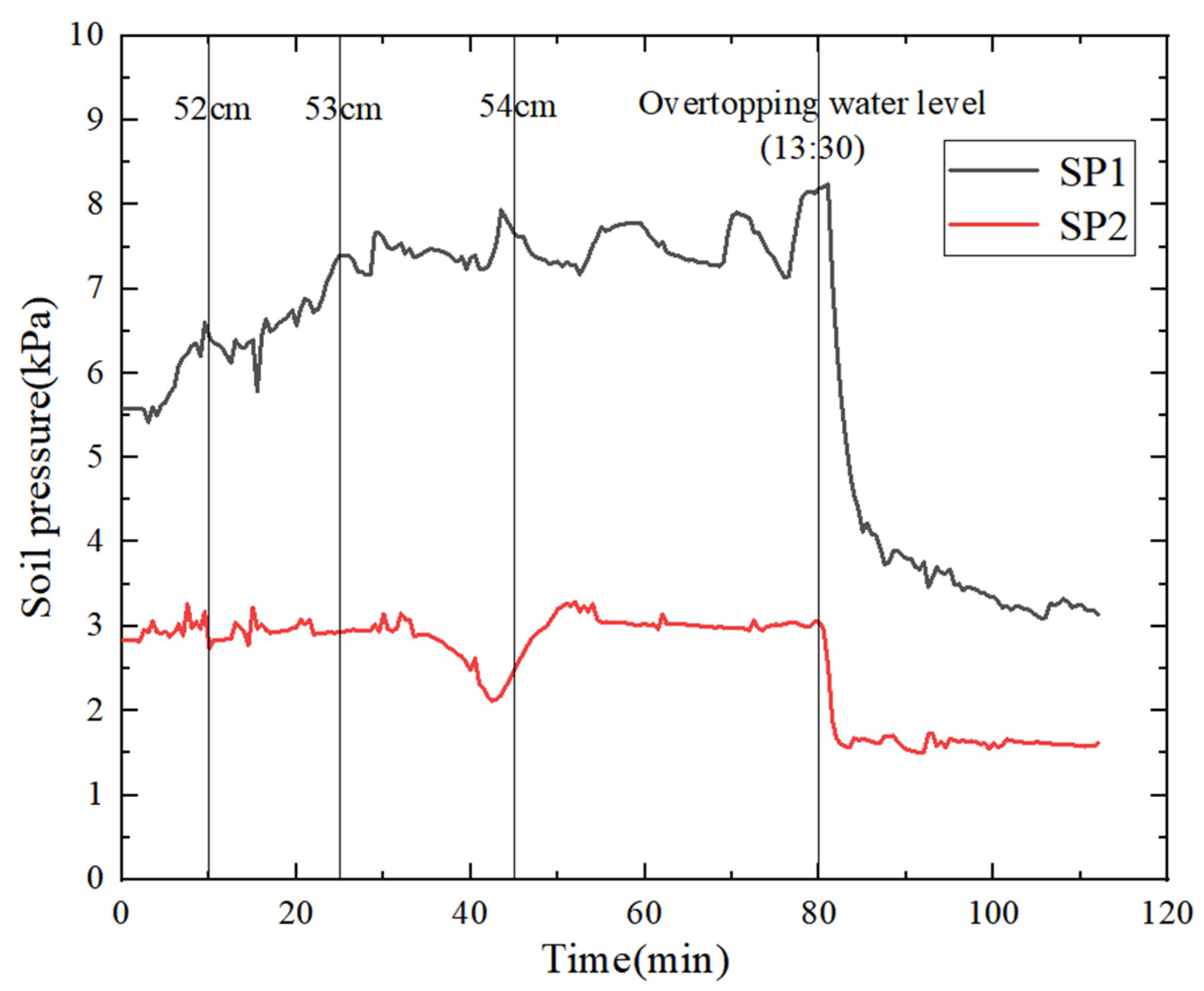

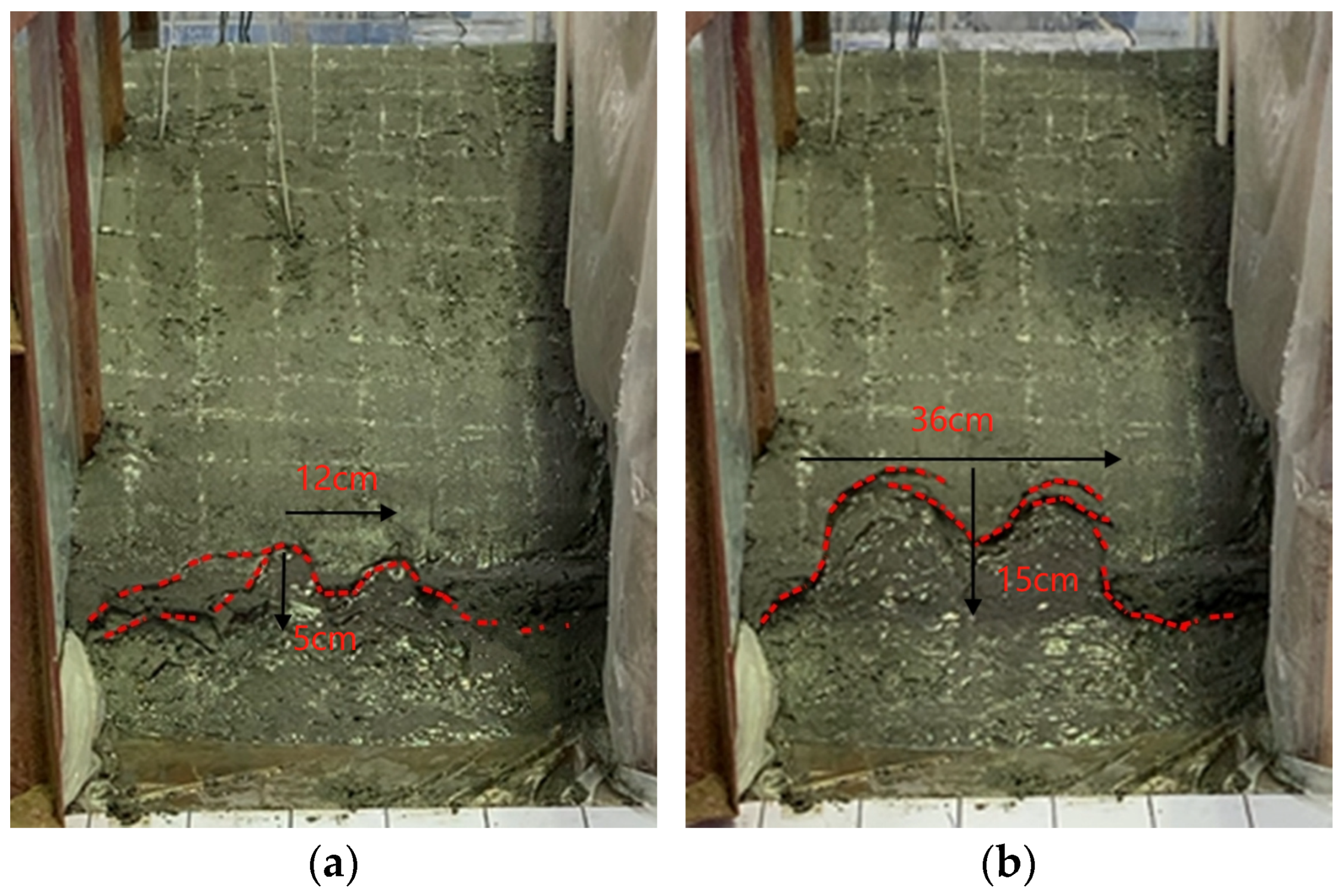
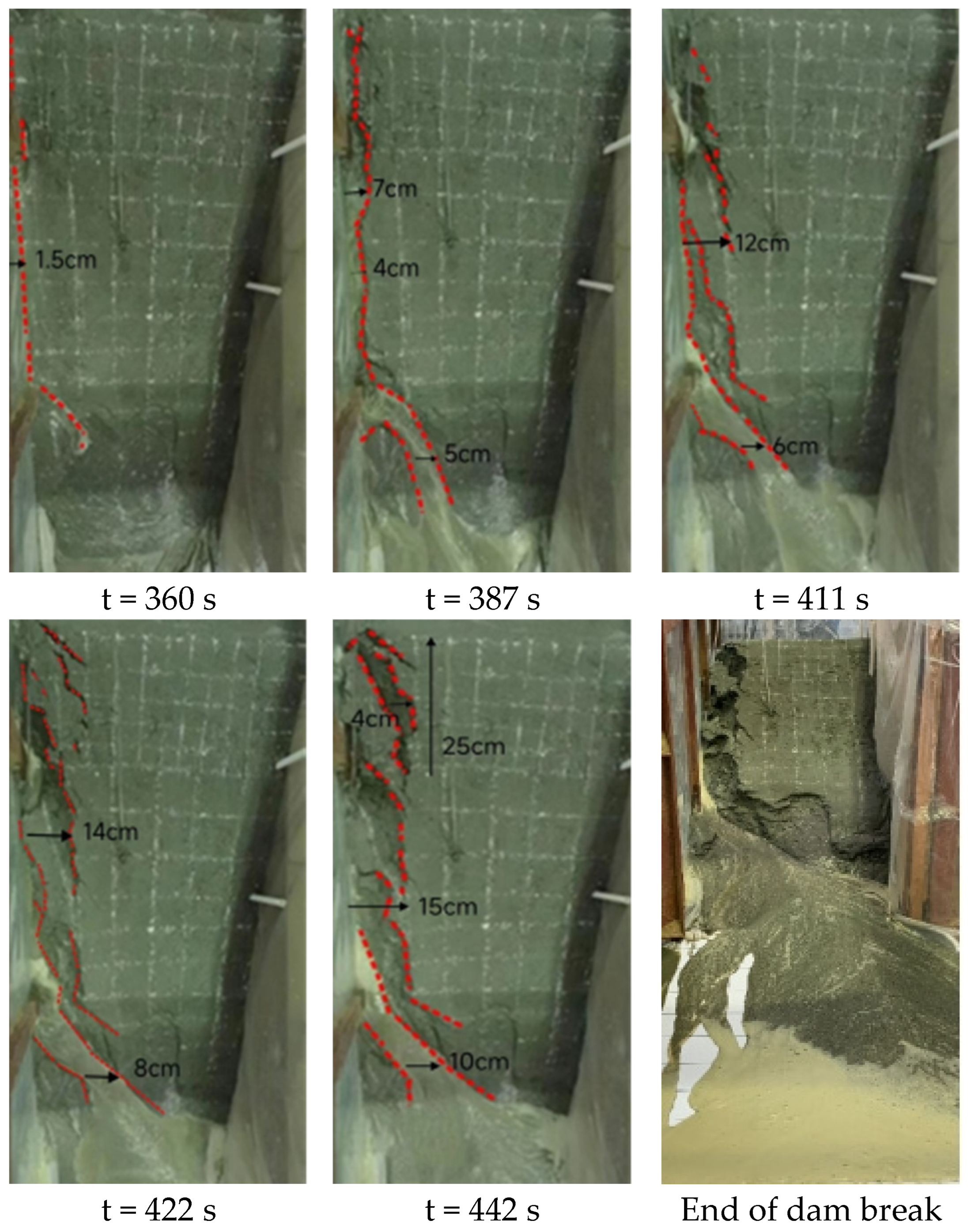
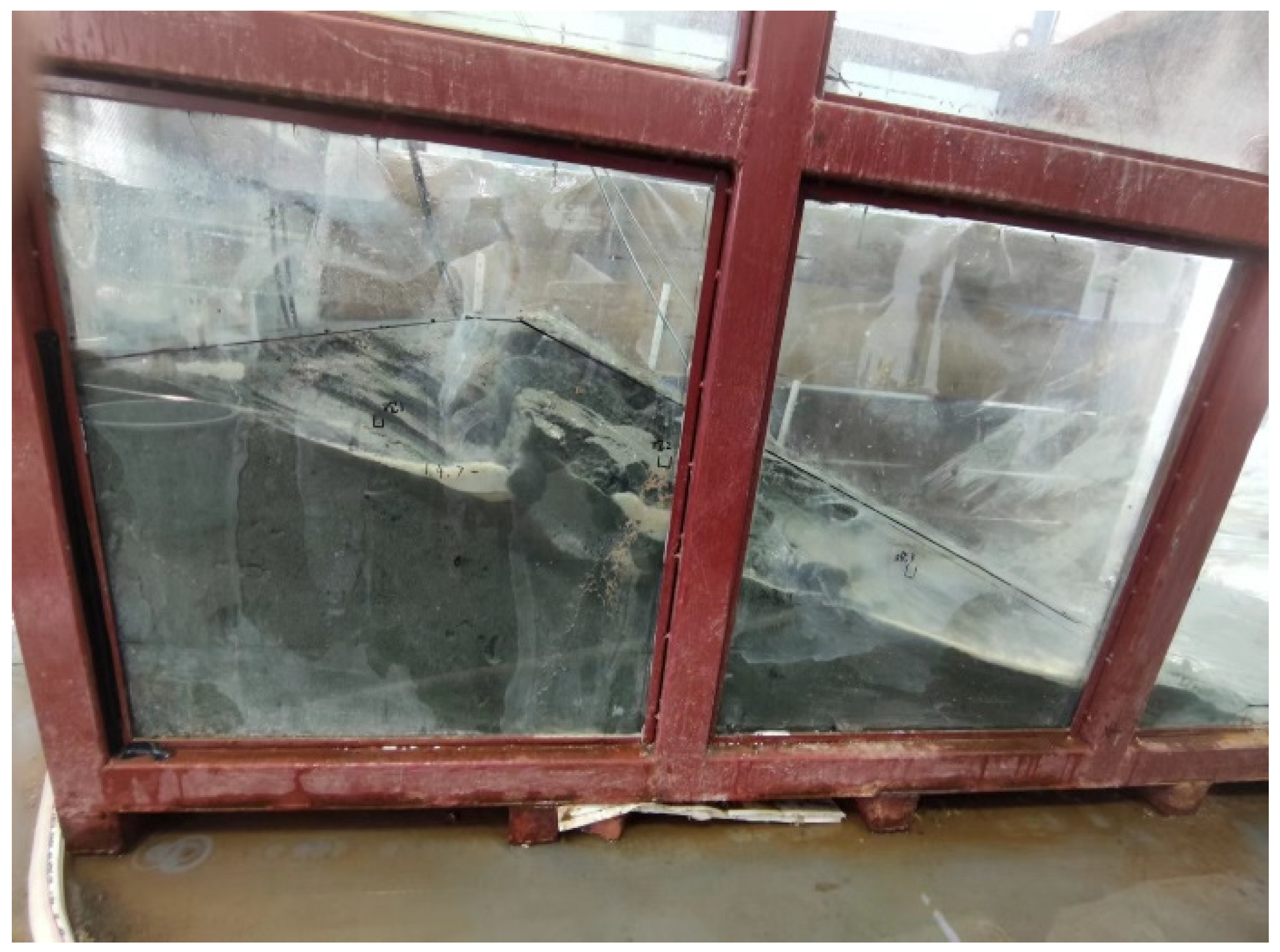
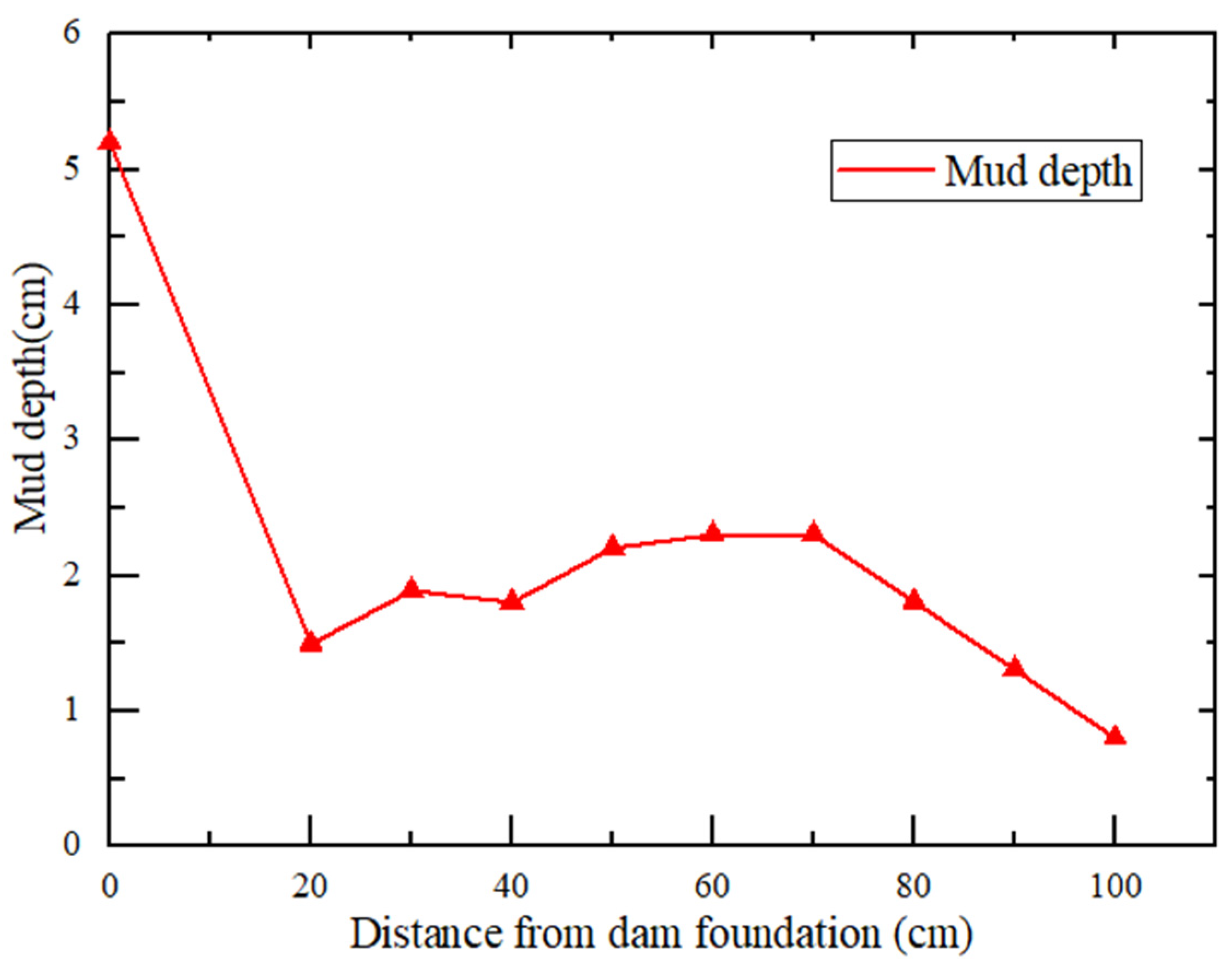

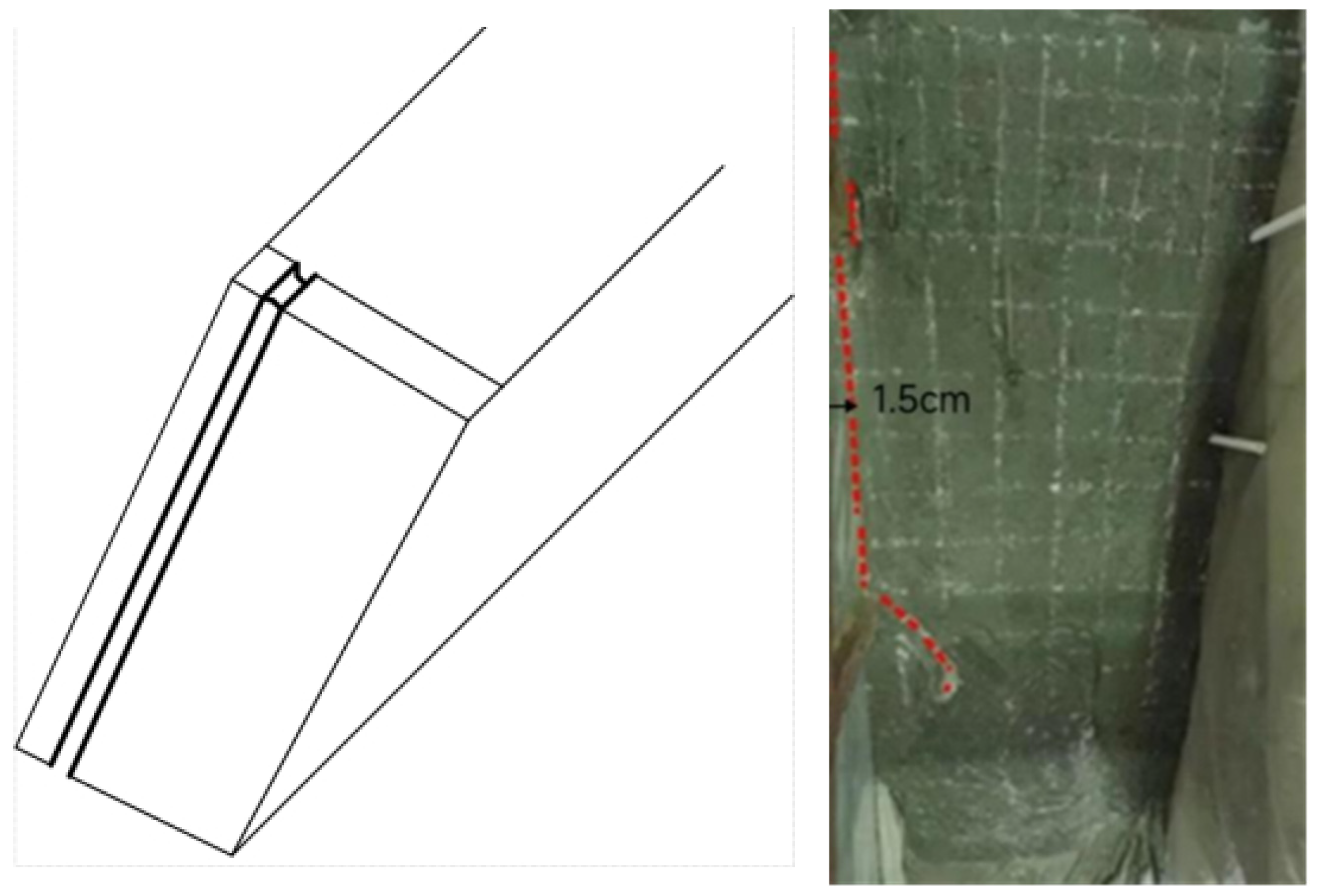

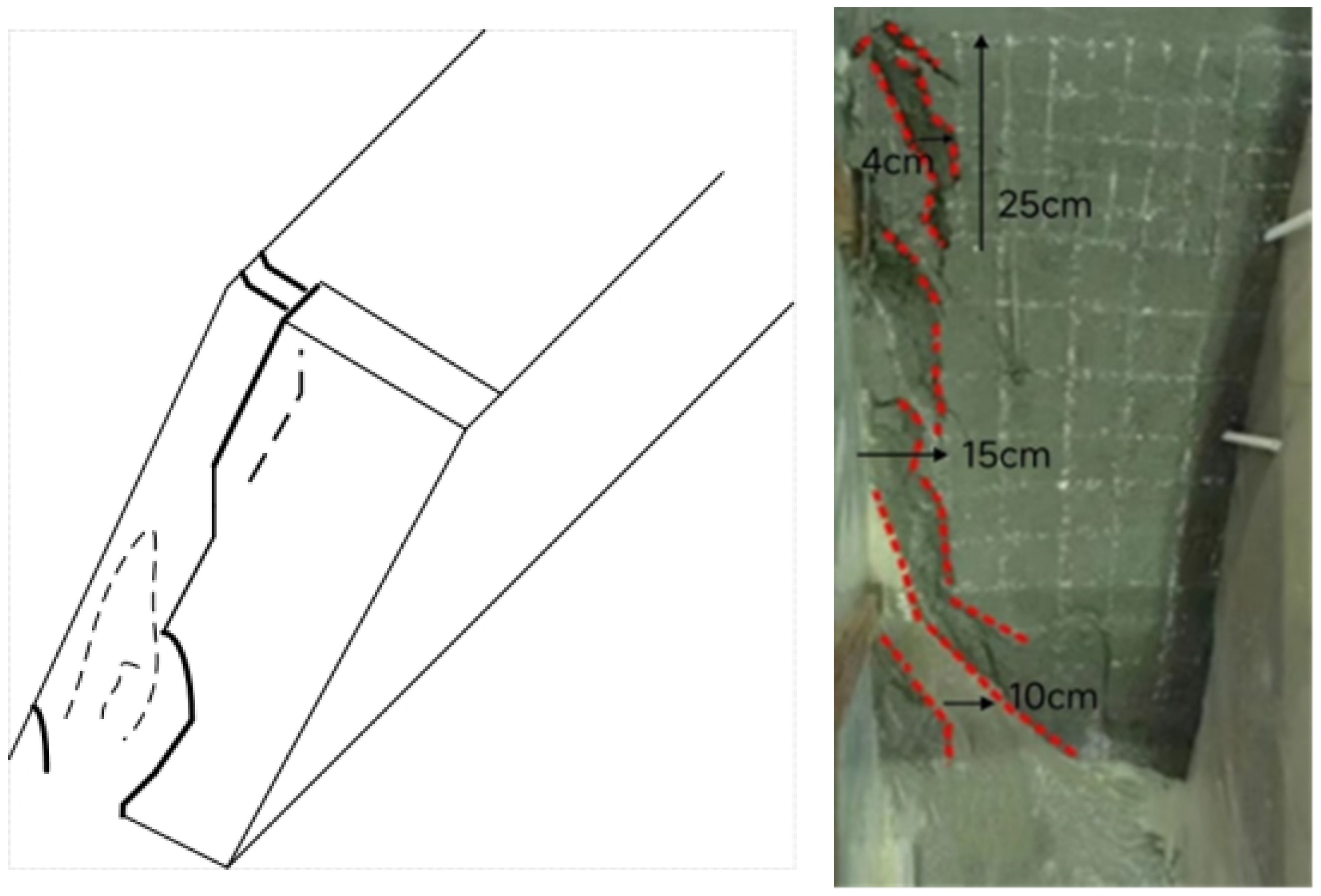
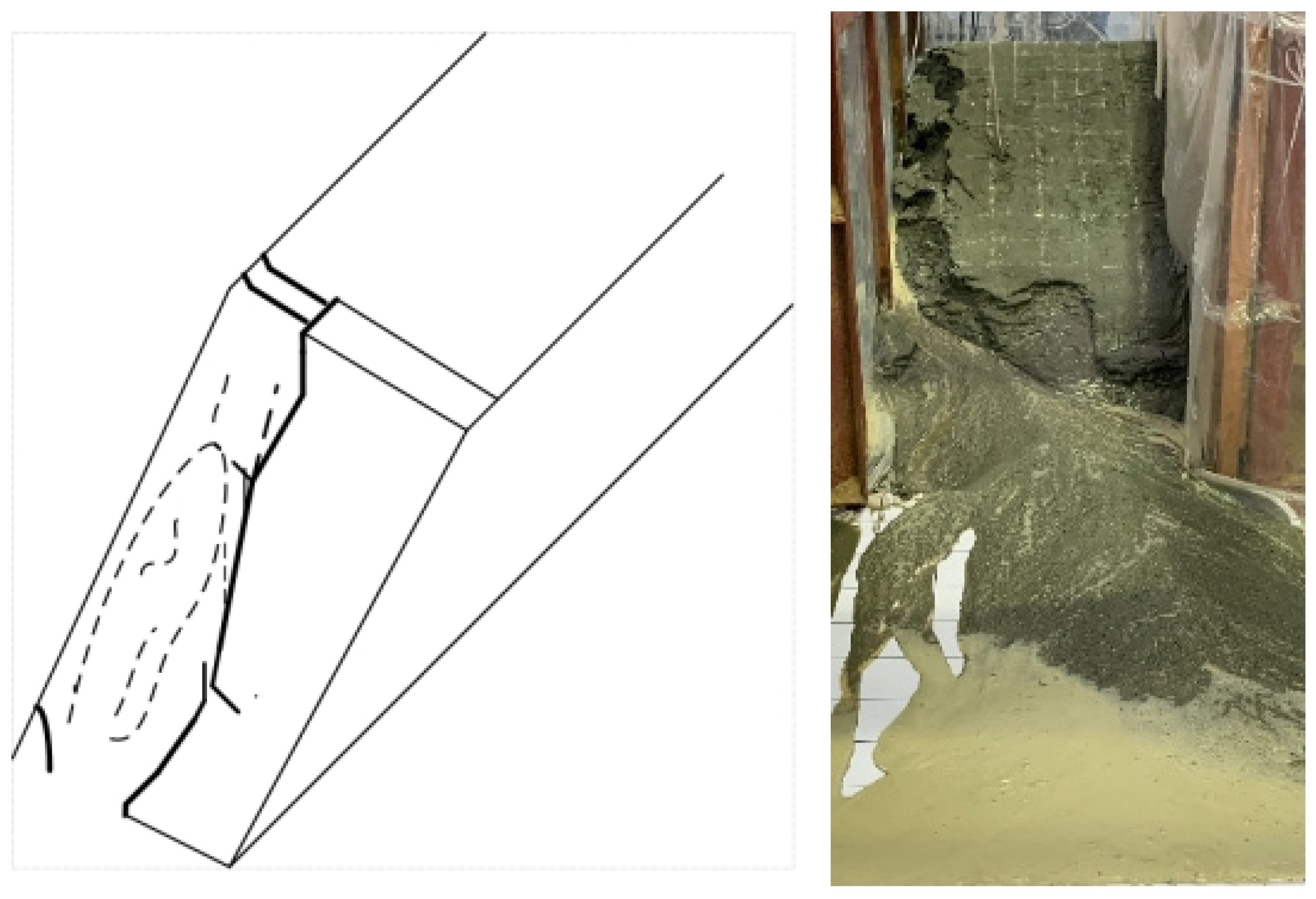
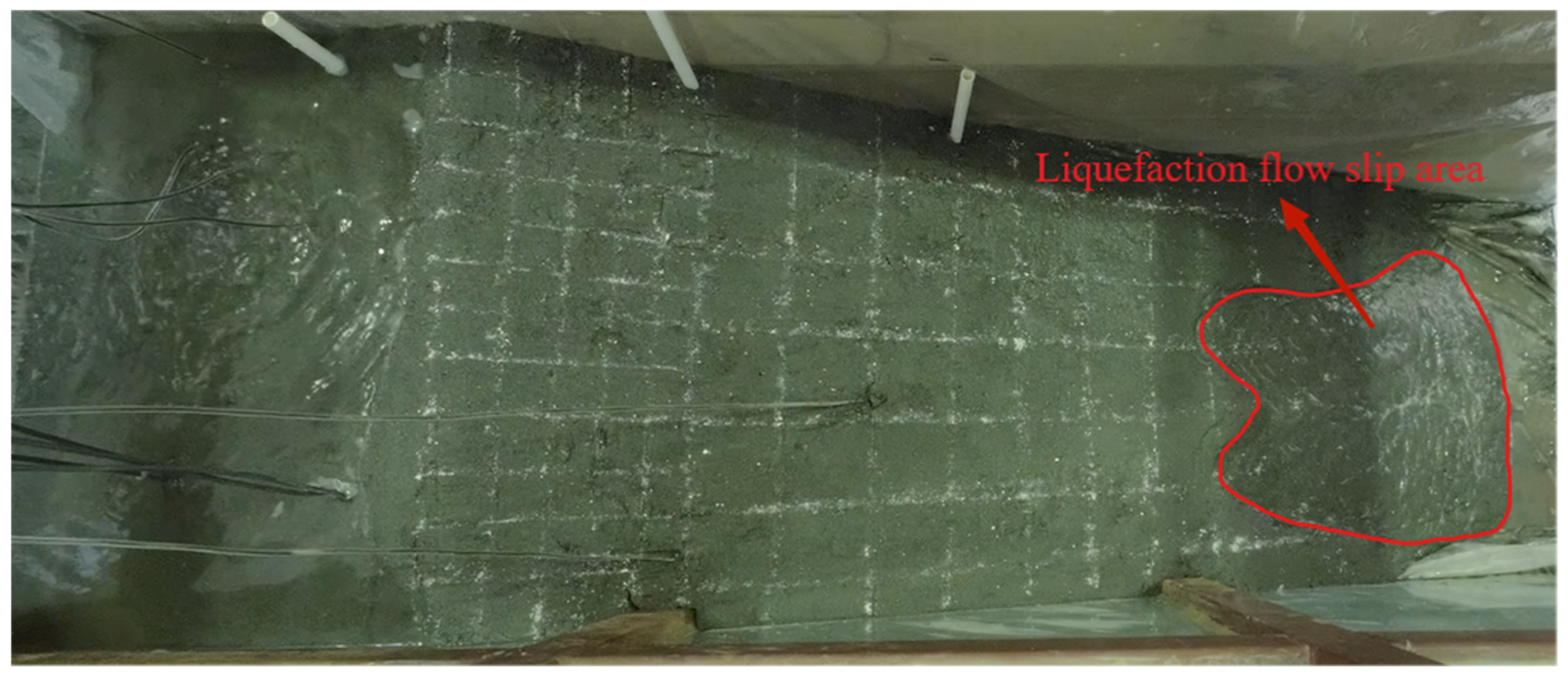



| Geometric Scale | Flow Scale | Time Scale | Roughness Scale | Area Scale | Volume Scale | Velocity Scale |
|---|---|---|---|---|---|---|
| 150 | 275,567.6 | 12.25 | 2.31 | 22,500 | 3,375,000 | 12.25 |
| Parameter | Median Particle Size (mm) | Specific Gravity | Void Ratio | Dry Density (g/cm3) | Internal Friction Angle (°) | Non-Uniform Coefficient |
|---|---|---|---|---|---|---|
| Value | 0.170 | 2.74 | 0.81 | 1.60 | 29.0 | 27.66 |
Disclaimer/Publisher’s Note: The statements, opinions and data contained in all publications are solely those of the individual author(s) and contributor(s) and not of MDPI and/or the editor(s). MDPI and/or the editor(s) disclaim responsibility for any injury to people or property resulting from any ideas, methods, instructions or products referred to in the content. |
© 2024 by the authors. Licensee MDPI, Basel, Switzerland. This article is an open access article distributed under the terms and conditions of the Creative Commons Attribution (CC BY) license (https://creativecommons.org/licenses/by/4.0/).
Share and Cite
Duan, Z.; Chen, J.; Xie, J.; Li, Q.; Zhang, H.; Chen, C. Study on the Evolution Characteristics of Dam Failure Due to Flood Overtopping of Tailings Ponds. Water 2024, 16, 2406. https://doi.org/10.3390/w16172406
Duan Z, Chen J, Xie J, Li Q, Zhang H, Chen C. Study on the Evolution Characteristics of Dam Failure Due to Flood Overtopping of Tailings Ponds. Water. 2024; 16(17):2406. https://doi.org/10.3390/w16172406
Chicago/Turabian StyleDuan, Zhijie, Jinglong Chen, Jing Xie, Quanming Li, Hong Zhang, and Cheng Chen. 2024. "Study on the Evolution Characteristics of Dam Failure Due to Flood Overtopping of Tailings Ponds" Water 16, no. 17: 2406. https://doi.org/10.3390/w16172406





